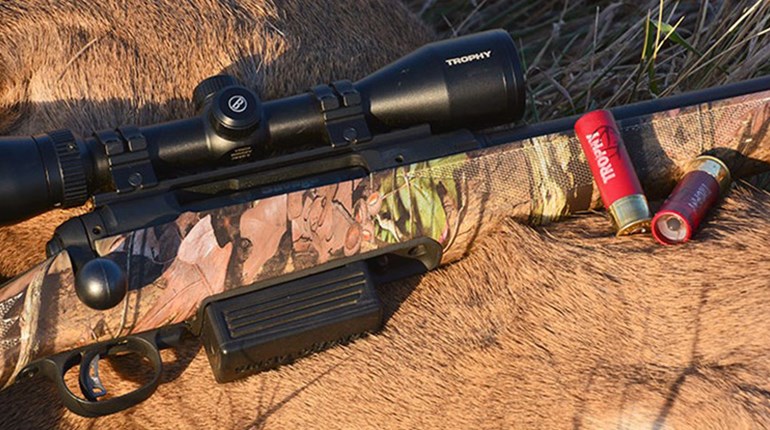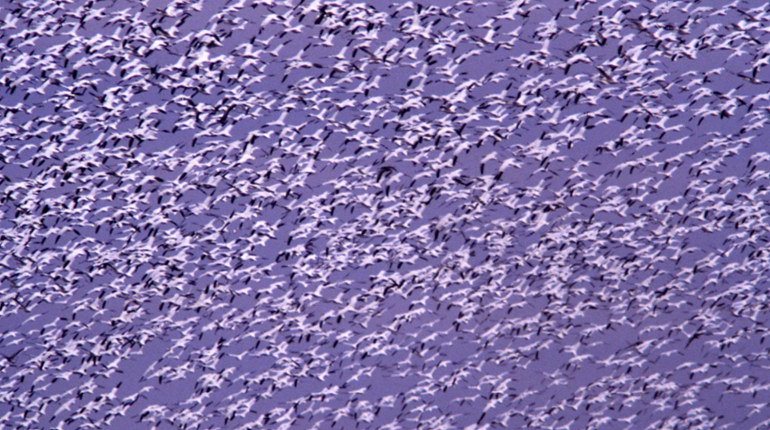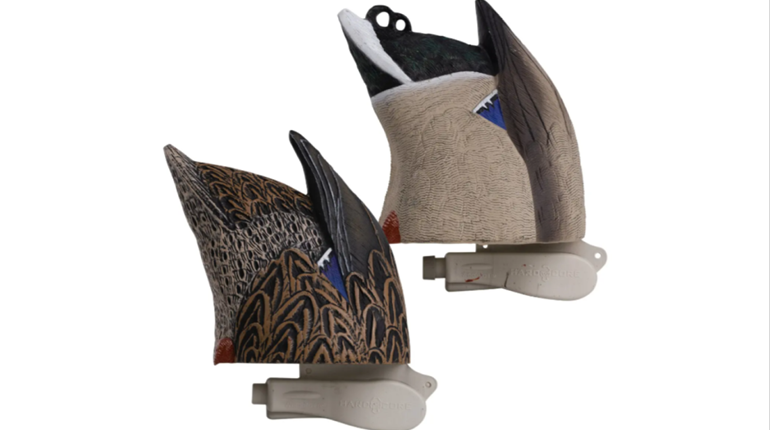Starlight guides me through a maze of narrowleaf cattail, yellow pond lily and wild rice. I paddle my kayak through narrow lanes in the maze. My arms are swampy-wet and tired when I reach a secluded pool in the 400-acre marsh. I use my paddle to push back into the cattails so I can look west over the marsh toward the wide and tidal Hudson River. Far off in the darkness there are other hunters talking in hushed tones, their paddles pushing water. There are a lot of black ducks and some mallards and mergansers here, but you can only shoot one black duck and they look so much like mallard hens you must be careful in the early light.
This is how I've begun New York's duck season lately. The public area is Tivoli Bays. I'm not afraid to tell you about it because everyone is already there. Ducks roost there but they mostly leave at first light to feed in creeks, ponds and swamps. I've found I can get passing shots if I worm my kayak to near the mouth of a creek—even when the tide is in, the johnboats most hunters use would have to be pushed like Humphrey Bogart did in "The African Queen" (leeches and all) to get to this spot. Still, the better hunting will be jump-shooting ducks later in the day along the nearby creeks.
I seldom get my limit in the marsh, but I go there because of the friends who do, the morning rush of wings and the tradition. To do even better this year I contacted four of NRA Outdoors' veteran outfitters for advice on hunting ducks in crowded places.
Scouting is Everything
All four of these duck-hunting gurus began by saying "scouting is everything." I caught Troy Cunningham, an Oklahoma-based outfitter driving north to guide duck and goose hunters in Alberta. He said, "Wherever you hunt them, ducks are on a pattern. It changes as food sources come and go, as fronts move in and as hunting pressure builds and falls. You need to scout to get in tune with that pattern. When you see where ducks are roosting, flying and feeding you'll start to see opportunities even in crowded areas."
Early in the season ducks might be feeding on aquatic insects and plants, said Troy, but as the season progresses frosts and morning ice on the water kill these insects. Ducks transition to feeding on grain and other foods found on dry land. "But ducks still have to drink," said Troy, "so look for ponds and other water sources near food sources as you scout."
Tony Vandermore, a Missouri outfitter, said, "Use Google Earth as you scout. It'll show you where the swamps and ponds are, and will give you a bird's-eye view of what's in those hard-to-reach corners of a public area. After that you have to get on the ground. Use a binocular. Ducks hide well. You have to get in there to find them."
Go Against the Trends
All four outfitters also agreed that to kill ducks in crowded places your decoys, calling and tactics have to set you apart and must match what ducks are naturally doing in your area. Cash Parrish, a Texas outfitter, said, "Last year I was hunting my family's place. It's a big marsh. There were five groups of us out that day. The other four groups all had robo ducks swirling their wings alongside their blinds. It was midseason so I didn't put out one of those contraptions and guess what, I killed all the ducks. Ducks aren't stupid. They'd been shot at for weeks by then. They learn what those things are."
Cash was on his way to hunt teal in a public area in Kansas when we talked. He said, "I'll have to scout and find the teal, and as I do, I'll scout the hunters. Hunters are easier to pattern than ducks—and are just as important to consider.
"In fact," said Cash, "what I've learned in Texas is everyone wants to be on the marsh at first light. Those guys bump the ducks off the roosts, and then they give up around 9 a.m. or so. The thing is, from about 10:30 a.m. to 2 p.m. the puddle ducks come back to rest after feeding somewhere. That's when my guys kill most of their ducks."
In another twist, Tony said that when the pressure is on the ducks he'll set small goose spreads. "Ducks love to land with geese, but few ducks hunters understand this," he said. "My clients are always surprised when they see ducks circle a marsh and avoid the guys with duck decoys out and land with my goose decoys."
Don't Call Too Much
Cash was laughing as he said, "Every year I see some young guys calling like they're competing in one of those contests in Stuttgart. I tell them you don't scream at someone who's walking right up to you. You gotta have a conversation with the ducks. You have to tell them what they want to hear. Often it's better to call as little as possible."
The other three outfitters said the same thing. Early in the season and after a cold front moves new ducks in, all these outfitters agreed calling more helps, but when the pressure is on you're more often better off saying as little as possible.
Find Secluded Pockets
When it comes to hunting ducks in crowded places, Eric Rue, a Louisiana outfitter (calcasieucharters.com), is all about finding out-of-the-way spots. "Duck hunting is location, location, location," he said. "You need to scout to get away from the people, because that's what the ducks will be doing."
When you find such a place use a small spread and call only a little, said Eric. The place needs cover, water and food. "By midseason—unless a front has pushed in new ducks—the ducks in public-access areas are survivors. You need to get in their secret spots and hide. When you think you've brushed in your boat or blind enough, brush it in some more."
Eric said "mud motors" (outboards designed to power through shallow marshes) have made it a little easier to get to some places and more difficult to get away from people. "Now you just have to scout harder to find places even guys with mud motors can't power into," he said.
These outfitters had a lot of other tips. Cash will toss gravel and use jerk cords to add motion. He's not fond of robo ducks because, as he said, "By the time ducks get to Texas they've seen those swirling wings from Minnesota all the way down to me." But they're all in agreement on the fundamentals—scout, get away from the crowds, make your decoy spreads and calling match what the ducks are naturally doing, and be patient. Duck hunting in crowded places is as much about out-maneuvering people as it is about ducks.





































